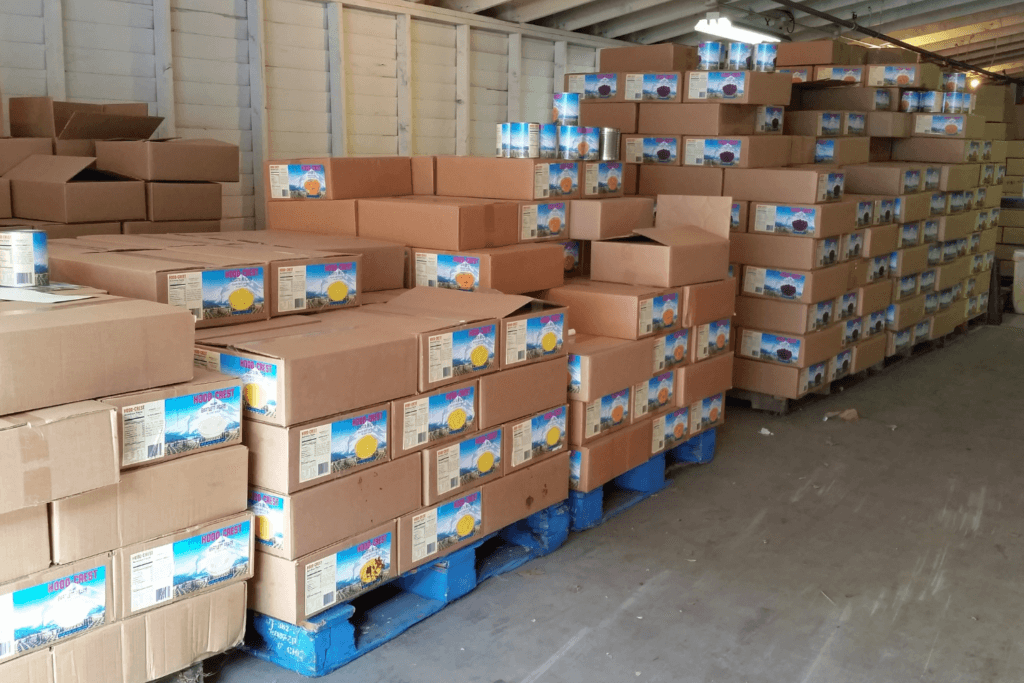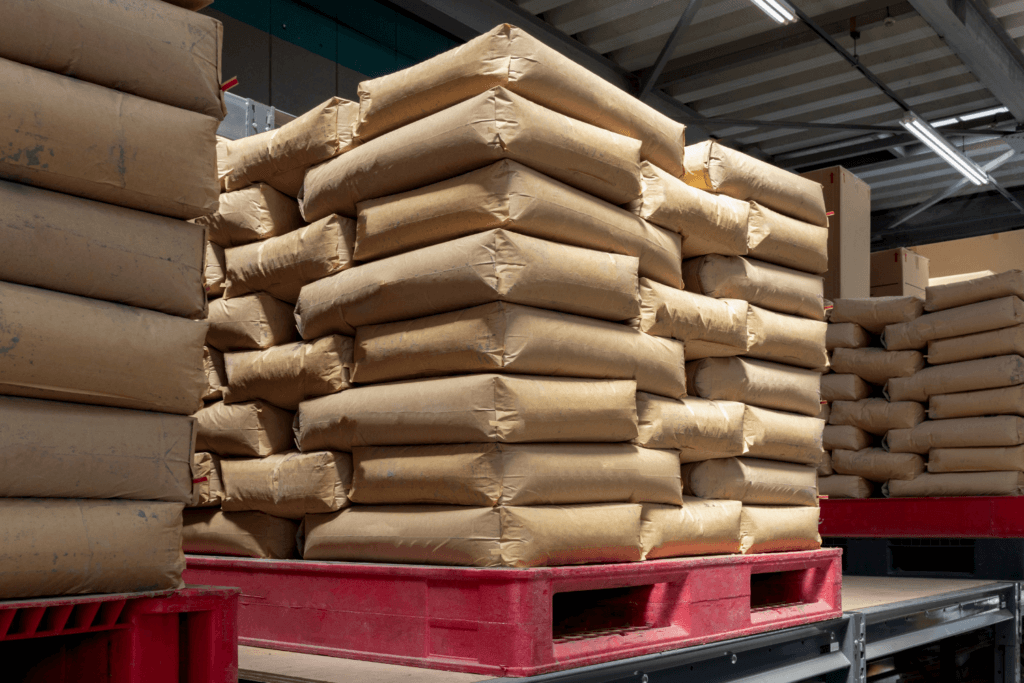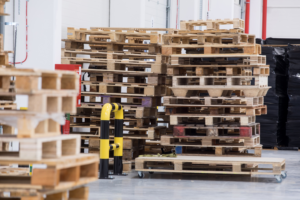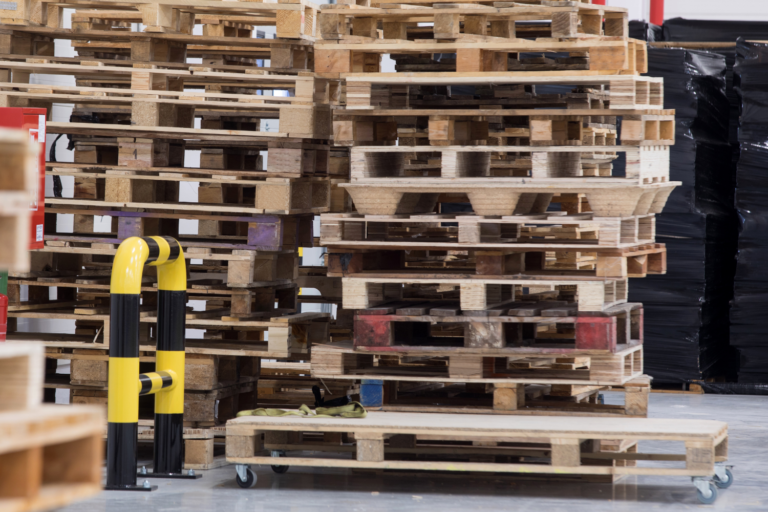While plastic pallets may have a higher upfront cost compared to wooden ones, they often provide long-term cost savings.
They have a longer lifespan, typically lasting five to ten years or more, while wooden pallets may only last for a few trips before needing to be repaired or replaced.
If you are considering replacing your wooden pallets with plastic, this article will provide you with the information you need about plastic pallets.
Are Plastic Pallets Better Than Wooden Pallets?
Plastic pallets have gained popularity in various industries due to their advantages over wooden pallets.
Unlike wooden pallets, which can splinter, crack, or harbor bacteria and pests, plastic pallets are designed to withstand harsh conditions, including exposure to moisture and chemicals.
They are also generally lighter, which can reduce shipping costs and make them easier to handle.
This weight difference can lead to significant savings in transportation, particularly for businesses that ship products on a large scale.
However, it is important to consider the specific needs of an industry when choosing between plastic and wooden pallets.
For instance, wooden pallets may still be preferred in certain sectors due to their lower initial cost and widespread availability.
If you need a constant supply or a significant amount of pallets but have a limited budget, wooden pallets may be a better choice for you.

How Durable Are Plastic Pallets?
Plastic pallets are renowned for their durability. Unlike wooden pallets, they are engineered to withstand the rigors of heavy use and exposure to environmental factors.
They are typically made from high-density polyethylene (HDPE) or polypropylene, both of which are designed to resist impact, moisture, and chemicals.
This resistance enables them to be used in industries such as chemicals, agriculture, and food processing without the risk of degradation or contamination.
Generally, they have a longer lifespan compared to their wooden counterparts.
Wooden pallets may last a few trips before needing repairs or replacement, but they can last anywhere from five to ten years, or even longer, depending on the usage and maintenance practices.
Given this, businesses can reduce the frequency of pallet replacements and repairs with plastic pallets.
Are Plastic Pallets Good for the Environment?
Plastic pallets are increasingly recognized for their environmental benefits, making them a sustainable choice for businesses in various industries.
They can last for several years depending on usage and care. This extended lifespan means fewer pallets are needed over time, leading to a decrease in resource consumption and waste generation.
On top of that is their potential for recycling and reuse.
At the end of their life cycle, they can be processed and turned into new products, reducing waste in landfills and minimizing the need for virgin plastic production.
Also, in contrast to wooden pallets, which can contribute to deforestation and habitat destruction, they can be produced from recycled materials.
Many manufacturers utilize post-consumer recycled plastics in their production processes.

What Is the Dimension of Plastic Pallets?
Plastic pallets come in various dimensions to accommodate different industry needs and applications.
While the specific size can vary by manufacturer and design, several standard dimensions are widely recognized and used in logistics and shipping. The most common sizes include:
48” x 40”
This is the most prevalent size in the United States, often referred to as the GMA pallet. It is widely used in grocery and food distribution, as it fits well with standard shipping containers and racking systems.
42” x 42”
This square pallet is often used in the beverage industry and for other bulk products. Its shape allows for better stability when stacking and storing.
48” x 48”
This is popular in various industries, including manufacturing and retail. It offers ample surface area for large loads and provides stability during transport.
40” x 30”
This smaller pallet is commonly used in retail settings, particularly for displaying products in stores. It is ideal for handling smaller quantities of goods while maximizing space efficiency.
60” x 40”
Often used in the European market, this size is compatible with Euro-sized containers and offers versatility for various types of cargo.

How Much Do Plastic Pallets Cost?
Plastic pallets typically range from $15 to $150 each.
The cost varies significantly based on several factors, including size, design, material quality, and manufacturer.
Those made from high-density polyethylene (HDPE) and polypropylene are more expensive than the ones made from recycled plastic.
Standard sizes are generally more affordable, too, due to their popularity and mass production. Custom or specialized pallets may come at a higher price.
Additional features, such as collapsibility, nestability, or specialized designs for specific applications like anti-static or hygienic pallets, can also increase the cost.
And if you work with a well-known pallet manufacturer, they charge more.
Nonetheless, buying in bulk can lead to significant cost savings, as many manufacturers and suppliers offer discounts for larger orders.
You may inquire about wholesale prices if you have a limited budget.
Where to Get Plastic Pallets for Free?
Finding plastic pallets for free can be a challenge because they are generally considered valuable assets due to their durability and longevity.
However, there are several strategies you can employ to acquire them at no cost.
One effective approach is to connect with local businesses that use plastic pallets for their shipping and storage needs.
Another is to explore online marketplaces and community boards. Monitoring these platforms regularly can help you snag a good deal when available.
Consider asking around in your community, too. Word-of-mouth can be a powerful tool, and letting friends, family, and colleagues know you are looking for plastic pallets may lead to unexpected opportunities.
Here is a list of the best places to find free pallets near you.

Conclusion
Plastic pallets’ durability, cost-effectiveness, and environmental benefits make them a compelling option for companies seeking efficient logistics solutions.
With an average cost ranging from $15 to $150, they may seem more expensive initially compared to wooden alternatives.
However, their longevity and reduced maintenance needs can lead to significant savings in the long run.
Businesses can expect them to last between five to ten years or even longer, reducing the frequency of replacements and minimizing waste.
If you want to try plastic pallets, we can provide you with some. Learn more about our plastic pallets here.
Chesapeake Pallets has been helping companies across the United States level up their logistics, one pallet at a time.
For inquiries, email info@chesapeakepallets.com or request a quote below!
















